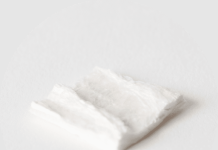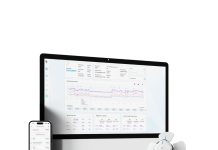UK-based medical device manufacturer Sky Medical Technology has announced the International Wound Journal has published the company’s landmark multi-centre randomised self-controlled trial (RCT).
The study compared standard of care (SoC) with and without the geko device in patients with hard-to-heal venous leg ulcers (VLUs) and reports an acceleration in the rate of healing by more than double in patients treated with the geko device vs. SoC alone. The results offer new hope to patients suffering long-standing chronic wounds.
The study is the first RCT to show a statistically significant increase in the rate of healing of VLUs treated with an advanced neuromuscular electrostimulation device (the geko device), adjunctive to SoC.
Approximately 3.8 million adults in the UK suffer with a wound. Many are hard-to-heal and despite following best practice wound healing can be prolonged or often never achieved, with over 50% of VLUs failing to heal in 12 months. Patients experience pain, anxiety, altered body image and isolation, leaving many without hope of improvement, suffering wound infections and recurrence.
The annual NHS cost to manage wounds is £8.3 billion annually, £5.6 billion of which is the management of wounds that fail to heal. VLUs affect one in 500 adults in the UK costing the NHS over £2 billion annually, 50% of which remain unhealed – a number that is set to rise.
Agnes Juguilon Collarte, Tissue Viability Specialist Nurse lead, Inner Northwest Division (Central London, Hammersmith & Fulham and West London), said: “As a clinician in wound care, especially when managing patients with chronic wounds, the ultimate goal is improvement in healing rates. The results of this randomised self-controlled trial are extremely impressive and are also borne out in our direct experience of real-world use. Non-healing VLUs stop patients living their lives and robs them of hope. The geko device consistently accelerates VLU healing in the patients I treat.”
Bernard Ross, founder and CEO at Sky Medical Technology, commented: “We are delighted to have completed this landmark study which further validates geko device effectiveness in reporting a doubling of the rate of VLU healing, in a market that has seen surprisingly little real innovation in SoC over 20 years. Gold standard multi-layer compression can be effective, particularly in less complex and smaller wounds, but even in these patents is too often associated with low patient adherence. The success of the geko device in increasing the rate of SoC VLU healing is a critical step in bringing medtech innovation to VLU patients around the world and to modernising standard of care – and cements our commitment to the streamlining of woundcare through evidence-based clinical efficiency for better patient outcomes.”
The geko device is a small-in-size, self-adhesive, wearable neuromuscular electrostimulator that is applied to the surface of the skin just below the knee, over the head of the fibula bone. It delivers a electrical pulse, once per second to the common peroneal nerve, activating the calf and foot muscle pumps, increasing venous, arterial, and microvascular flow, effectively replicating the effects of exercise.






